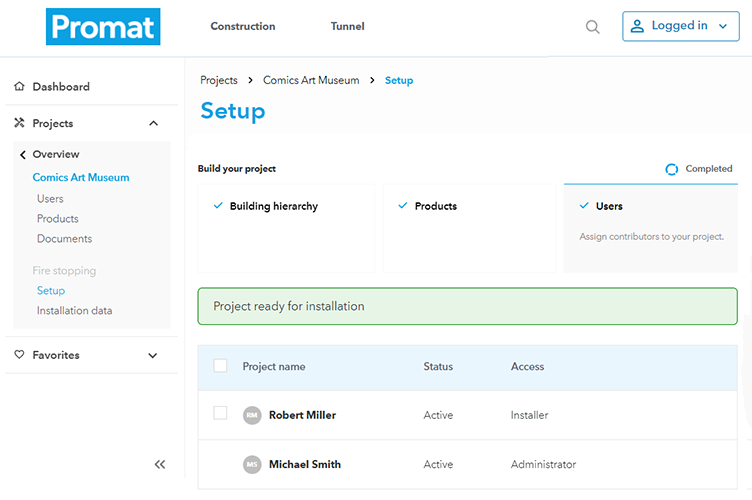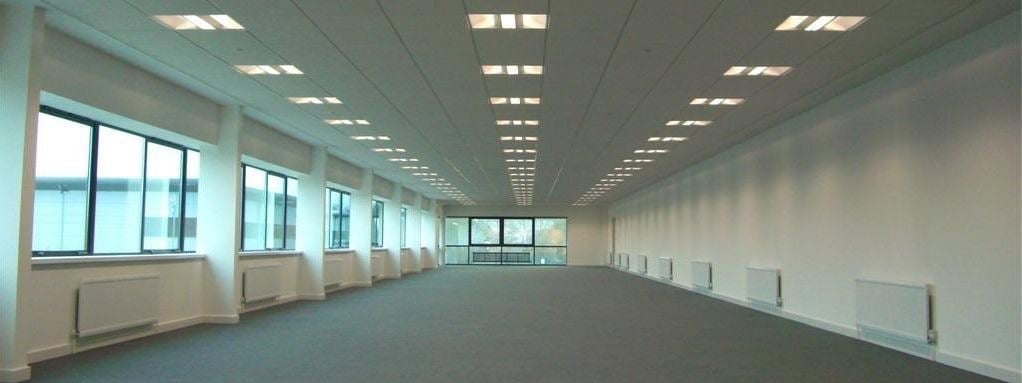
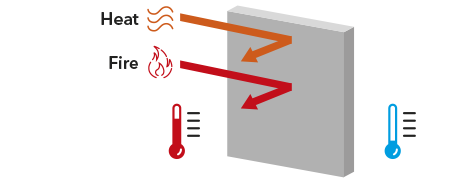
Fire protective boards: stopping fire and heat from spreading
Whenever a fire develops in a building, it is important that the fire stays where it is and that load-bearing structures maintain their load-bearing capabilities for a time sufficient to enable people to evacuate and rescue operations to be carried out. Fire protective boards are designed to do just that, as they are resistant against the heat and radiation of the fire. Thanks to their low heat conductivity and high heat absorption, combined with low shrinkage to keep their integrity, they make sure that the temperature on other side of the building board remains low over a long period of time during a fire.
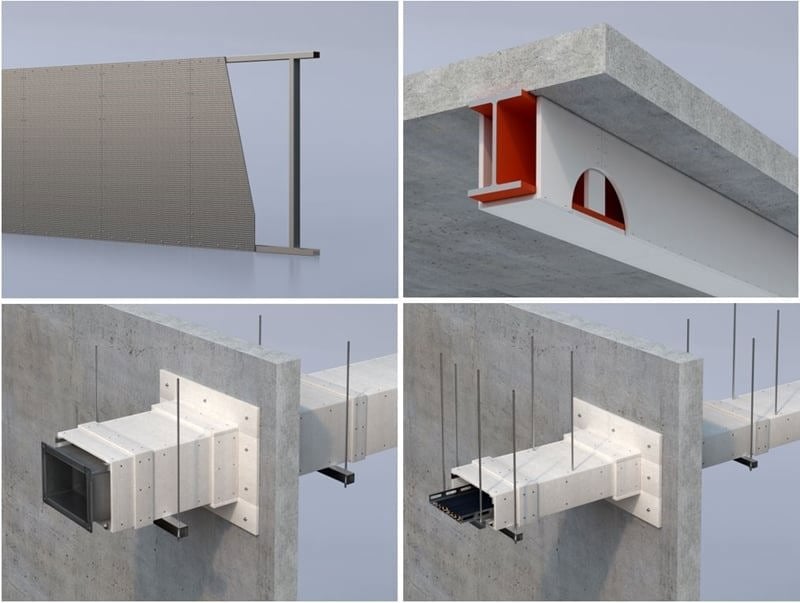
Integrity (E)
Thanks to these capabilities, fire protective boards can be used for many applications, including as fire barriers for:
- compartmentation of buildings
- encasements or secondary linings for protection of a building’s load-bearing structure
- encasement of electrical cables
- ventilation and smoke extraction ducts
In all these applications, the fire protective board fulfills the same function. On one side of the board there is the heat of a raging fire, on the other side the temperature remains low.
By keeping the fire and heat locked up behind fire protective boards, the fire does not propagate through the building and the temperature doesn’t increase too much on load-bearing structures. People thus have time to escape to a safe place, fire and rescue services can intervene, the building structure does not collapse, hot smoke can be extracted (essential to the safety of people) and safety-critical systems inside the building keep functioning.
Fire resistance
Depending on the application of the board, the term “fire resistance” can have different meanings. In the European test standards different criteria are given. The most important ones are as follows:
- R: Load-bearing function – ability of a structure to carry the loads without collapsing.
- E: Integrity – ability to stop flames and hot gases from penetrating.
- I: Insulation – ability to restrict the temperature rise on the cold side. In most cases, the temperature at the cold surface may not increase more than 140 degrees Celsius on average, or 180 degrees at any local point.
The fire resistance is always expressed in minutes, usually in classes that are multiples of 30 minutes. For example a fire protected load-bearing steel structure that can withstand fire for at least 90 minutes will be “R 90”, and a partition wall that keeps the flames out and temperatures low for at least 60 minutes will be “EI 60”.
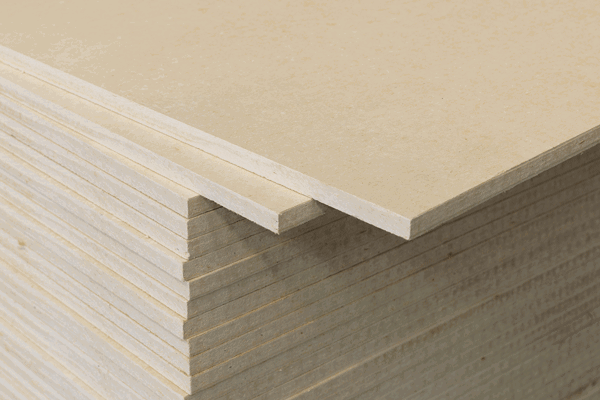
Reaction to fire
If a material burns, it can contribute to the fire’s development. The behavior of material when exposed to heat is called the reaction to fire, and is expressed in classes such as A1, A2, B, C, etc. Classes A1 and A2 are considered as non-combustible materials. All Promat fire protective boards are non-combustible “A1”, which is the best (and safest) possible classification. These boards include PROMATECT®-100, PROMATECT®-200, PROMATECT®-AD, PROMATECT®-L, PROMATECT®-L500, PROMATECT®-H, PROMATECT®-XS and MASTERBOARD®.

Types of boards
There are many different types of fire protective boards, with different production technologies and compositions. Some boards rely more on thermal insulation values, and some more on heat absorption, but in the end they all aim to maximize the temperature reduction on the cold side compared to the fire side.
However, thermal performance is not all that counts. Each type of board has its own behavior during a fire. For example, shrinkage, cracking or deformation when exposed to fire can reduce the effectiveness of a board. Promat boards are characterized by high thermal stability, so they deliver fire resistance under the most severe conditions.
Within the Promat board range, different board types and a wide range of board thicknesses are available, each suited for specific fire safety applications. Apart from the fire resistance performance, the different board types each have specific advantages such as easy installation, resistance against impact or resistance against weather exposure.
Fire protective boards - always part of a system
A fire protective board alone cannot stop a fire. For the board to perform, it must be held in place with the correct types and distances of fixings, and different boards need to be correctly joined so that flames do not penetrate through any gaps. If a board shrinks or deforms to a significant degree then more complex solutions are needed for the fixings and joints, such as mounting clips, metal substructures, and joint fillers. This will show in the test reports and installation instructions of the board. If mounting instructions are not carefully followed, for example omitting or not carefully applying a required joint filler, using the wrong type of fixing or a fixing distance larger than allowed, then the fire resistance during fire exposure will be drastically reduced.
As Promat boards are optimized for thermal stability and mechanical strength, in most cases the boards can simply be put in place and fixed with staples, and no joint treatment is necessary. A stable board enables a simple system, which will be more reliable because it leaves little room for mistakes during the mounting. An additional benefit is obvious: a simple installation method saves time and reduces costs.
The fire resistance performance depends on the system
The fire resistance performance is a characteristic of the system, not of the board alone. During a fire test the performance depends on a complex interaction of temperature flows and shrinkage and deformations. Therefore a fire resistance classification always needs to be based on test results for the given application, board type, thickness and installation method. The possibility to extend the scope by calculations is limited, because the complex behavior that occurs during a fire is hard to capture in models, and extrapolation of test results is generally not allowed.
Therefore, when looking at fire resistant board solutions, whether a partitioning wall, structural protection, cable encasement or smoke extraction ducts, always consider the system and not only the board, and rely on fire resistance classifications that have been determined by independent institutes.
Other performances of the fire protective boards
We all hope that there will be no fire and therefore the board also has to perform well on other metrics. The board must be durable to resist various exposures during its working life in a building.
For example, exposure to heat, cold, moisture, direct or indirect weather exposure or mechanical impact can pose specific requirements on a board. This is where different board types have specific strengths. The relevant durability classification is done according to European Assessment Document 350142-0-1106 (previously ETAG 018-4). Most Promat boards are classified for a durability of 25 years (the best possible result) for internal application and, in some cases, even for semi-exposed application.



